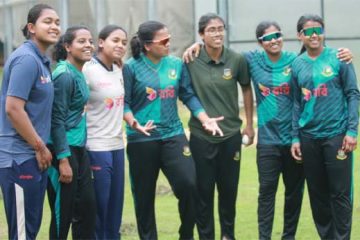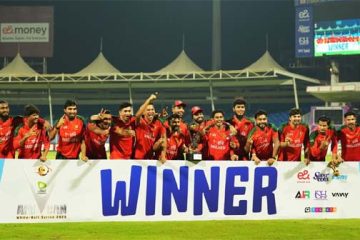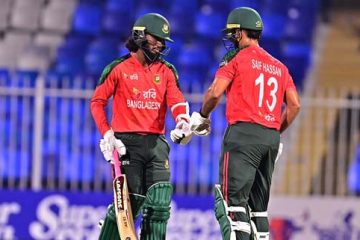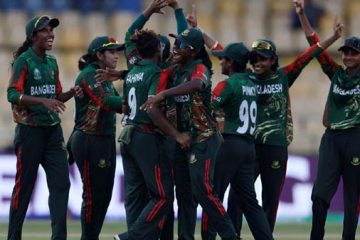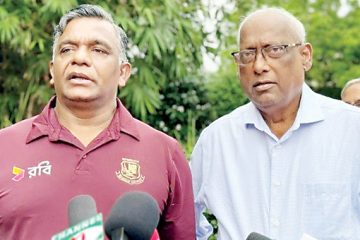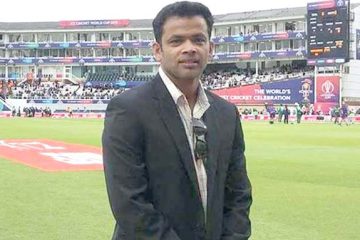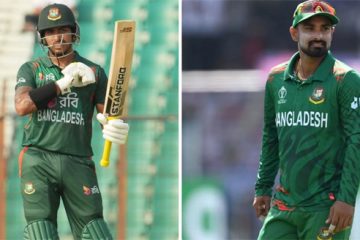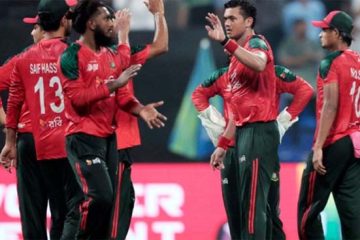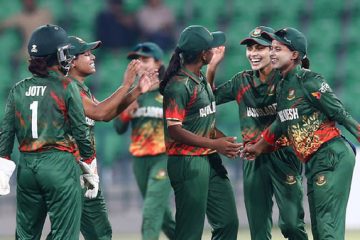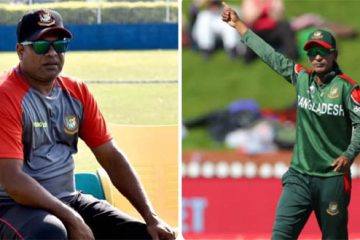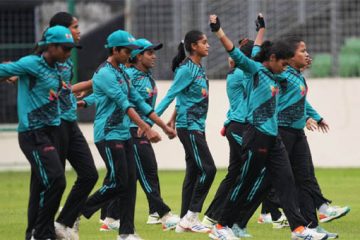1983: Indian Summer
The 1983 World Cup, the third consecutive Cup held in England, saw a few changes in the tournament’s format. The number of teams were the same, as well as the group divisions; two groups of four with the top two from each group going through to the knockout stage, but to counter the disruptions of England’s summer weather, each team would play each other twice in the group stage. The only non-Test playing nation was Zimbabwe, with Sri Lanka being awarded Test status in 1981.
Umpires were told to apply a stricter interpretation of wides and bouncers. The result? More than twice as many wides per match as in 1979 (9.59 to 4.64). A fielding circle (actually an oval) was introduced, 30 yards away from the stumps. Four fieldsmen needed to be inside it at all times.
CHAMPIONS: INDIA
India emerging victors was possibly the biggest upset in World Cup history. Although they were a decent Test side, it was popularly thought at the time that the Indians did not take the newer version of the game too seriously. Whatever the reasons, the results leading up to the tournament betrayed their ineptitude; in 40 games dating back to their first in 1974, India lost 28 and won 12. They had lost all matches in the previous edition. On the other hand, tournament favourites and two-time champions West Indies came into the Cup with 38 victories from their first 52 matches in the format, and emerged victorious in every single match in the first two editions.
India could not match West Indies man-for-man for talent. Sunil Gavaskar, the opener who had not yet found his feet in one-day cricket and Kapil Dev, the captain and talismanic allrounder, were the only players in their line-up who are today remembered as ‘great’, whereas West Indies had several such names.
Even with such disparity in ability, India inflicted the first World Cup defeat on the mighty West Indians on the opening day of the Cup, a result that would have raised more eyebrows if India had been considered serious title contenders. At that point it was treated as an upset, just as Zimbabwe’s win against Australia on the same day.
In the final analysis they won six of their eight games; if at all the victory was an upset, then there was a method to it. India picked a team to suit the limited-overs format and the English conditions.
India’s victory owed much to their recognition of the requirements of limited-overs cricket, requirements that are today entrenched in theory and practice: doing the basics right (India were an excellent fielding side in 1983), and having players who could contribute in more than one discipline.
The batting was an even mix of attack and defence, the anchor provided by Gavaskar, Amarnath and Yashpal Sharma, letting others like the belligerent Kris Srikkanth, Sandeep Patil and Kapil Dev express themselves with expansive shots. The bowling was packed with seam-bowling allrounders such as Madan Lal, Roger Binny and Mohinder Amarnath. They, along with Balwinder Singh Sandhu, exploited the English conditions to the full.
The X-factor was their captain, Kapil Dev, the genuine allrounder of the side. One of the best opening bowlers at the time, and a batsman capable of utter destruction of bowlers on his day, he scored a scarcely believable 175 not out after walking in at 9 for 4 in India’s match against Zimbabwe. A loss in that match could have seen them going out of the tournament, having been beaten in their previous two matches against West Indies and Australia. The captain’s magnum opus (his only century in limited-over-internationals) turned the tide and they went on to win all their remaining matches, culminating in a come-from-behind victory in the final.
In the final they were all out for 183, but after the West Indies reached 50 for 1 with Viv Richards in murderous mood, his wicket turned the tables with India eventually winning by 43 runs. The Caribbean triumphs of the previous two editions signalled the dominance to come. India’s victory had implications further-reaching than that; with this triumph providing a springboard, the popularity of
the game peaked in India, resulting in them becoming the game’s sole financial superpower.



